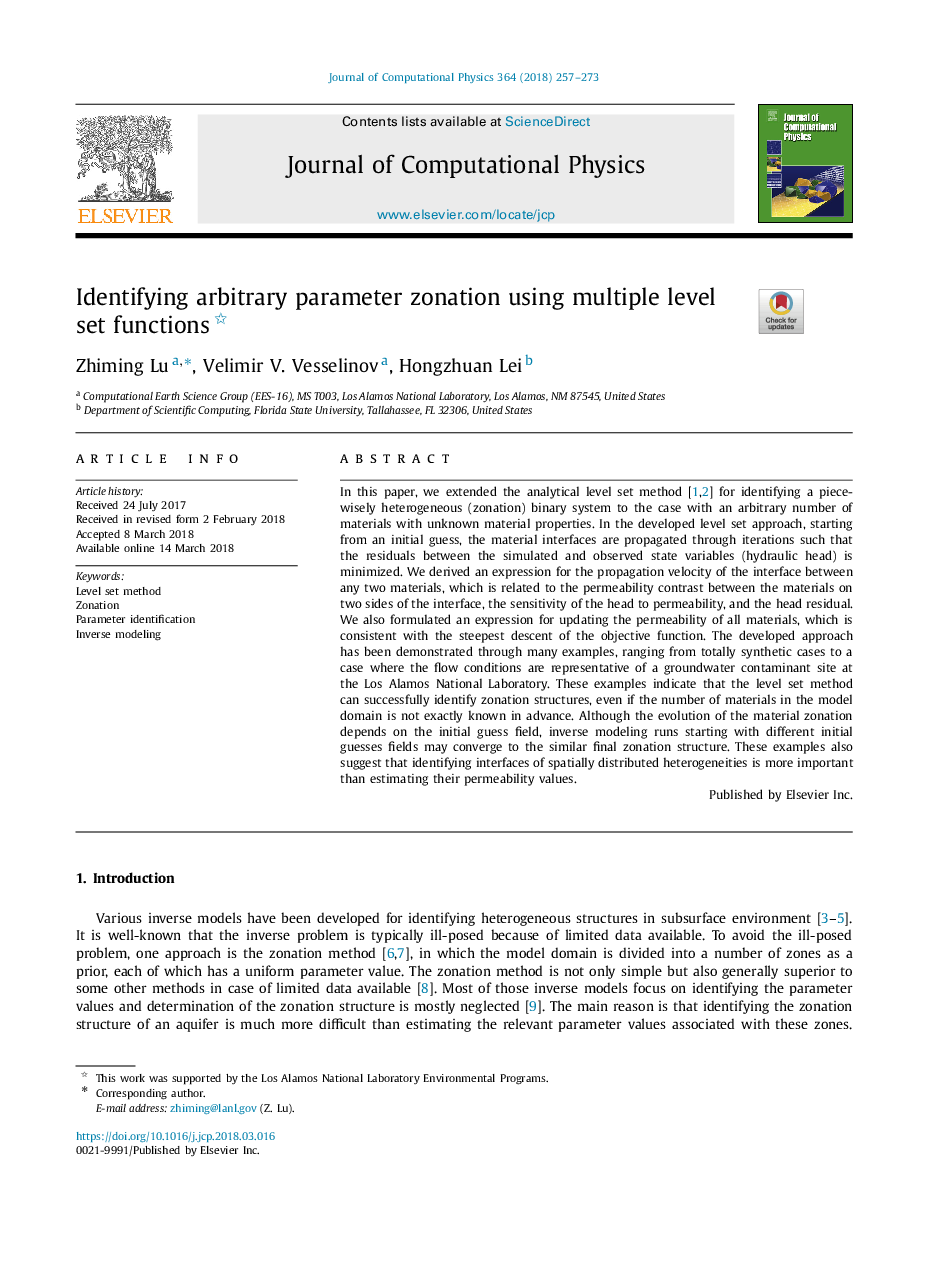| Article ID | Journal | Published Year | Pages | File Type |
|---|---|---|---|---|
| 6928905 | Journal of Computational Physics | 2018 | 17 Pages |
Abstract
In this paper, we extended the analytical level set method [1], [2] for identifying a piece-wisely heterogeneous (zonation) binary system to the case with an arbitrary number of materials with unknown material properties. In the developed level set approach, starting from an initial guess, the material interfaces are propagated through iterations such that the residuals between the simulated and observed state variables (hydraulic head) is minimized. We derived an expression for the propagation velocity of the interface between any two materials, which is related to the permeability contrast between the materials on two sides of the interface, the sensitivity of the head to permeability, and the head residual. We also formulated an expression for updating the permeability of all materials, which is consistent with the steepest descent of the objective function. The developed approach has been demonstrated through many examples, ranging from totally synthetic cases to a case where the flow conditions are representative of a groundwater contaminant site at the Los Alamos National Laboratory. These examples indicate that the level set method can successfully identify zonation structures, even if the number of materials in the model domain is not exactly known in advance. Although the evolution of the material zonation depends on the initial guess field, inverse modeling runs starting with different initial guesses fields may converge to the similar final zonation structure. These examples also suggest that identifying interfaces of spatially distributed heterogeneities is more important than estimating their permeability values.
Related Topics
Physical Sciences and Engineering
Computer Science
Computer Science Applications
Authors
Zhiming Lu, Velimir V. Vesselinov, Hongzhuan Lei,
